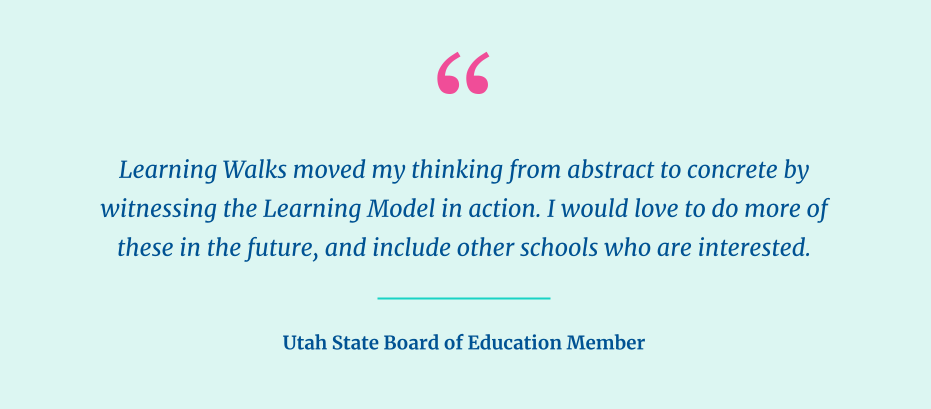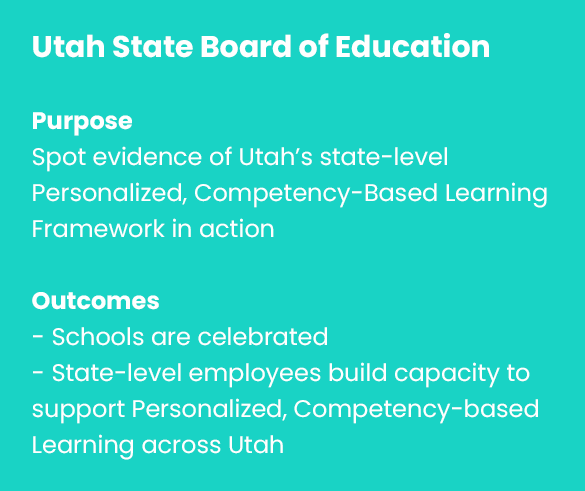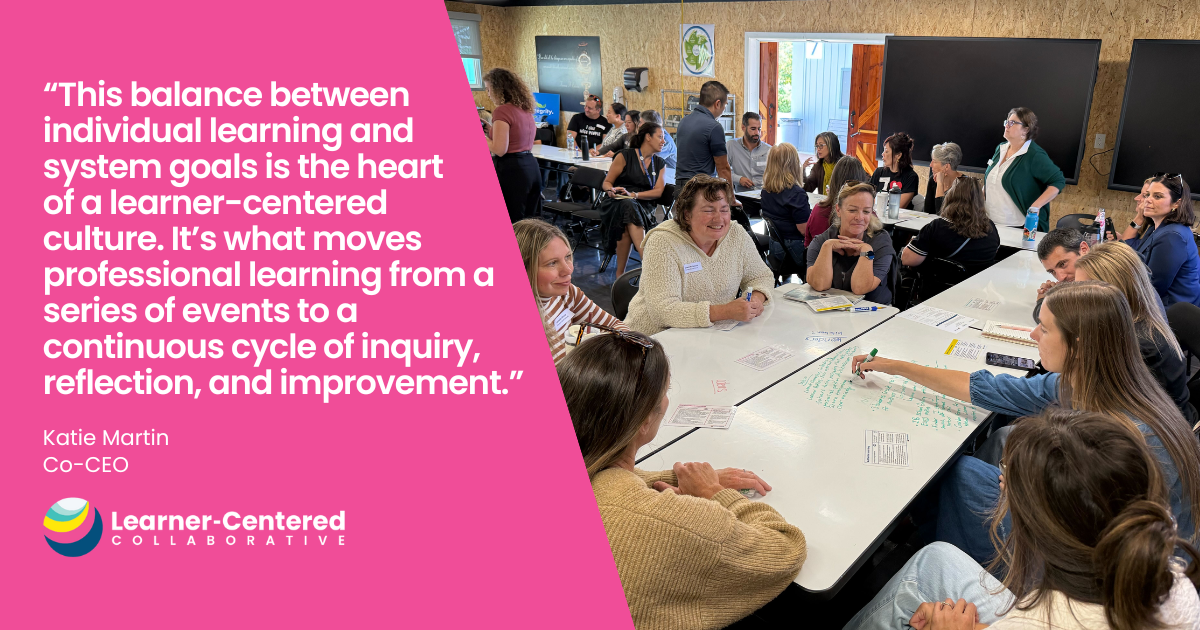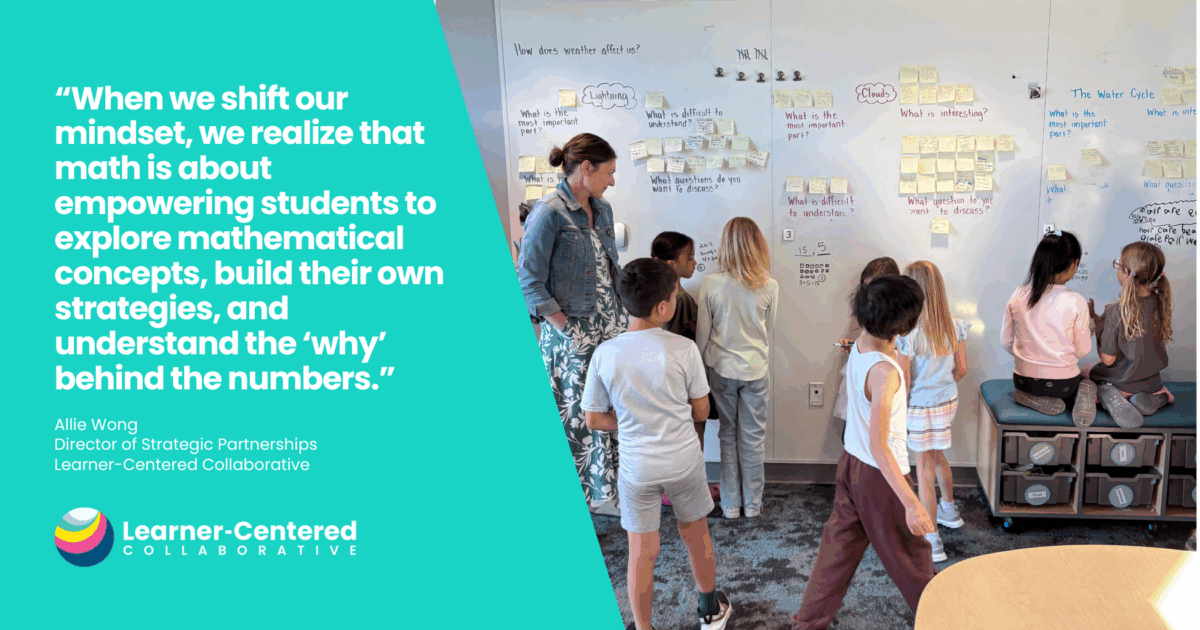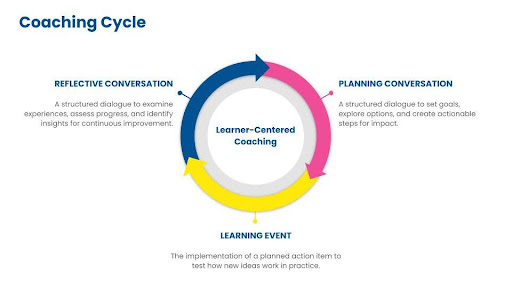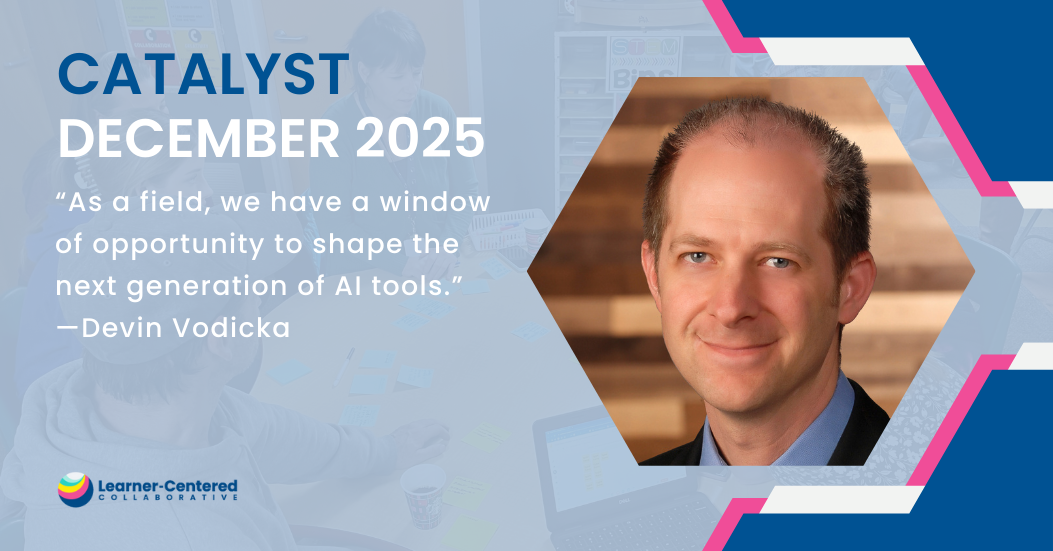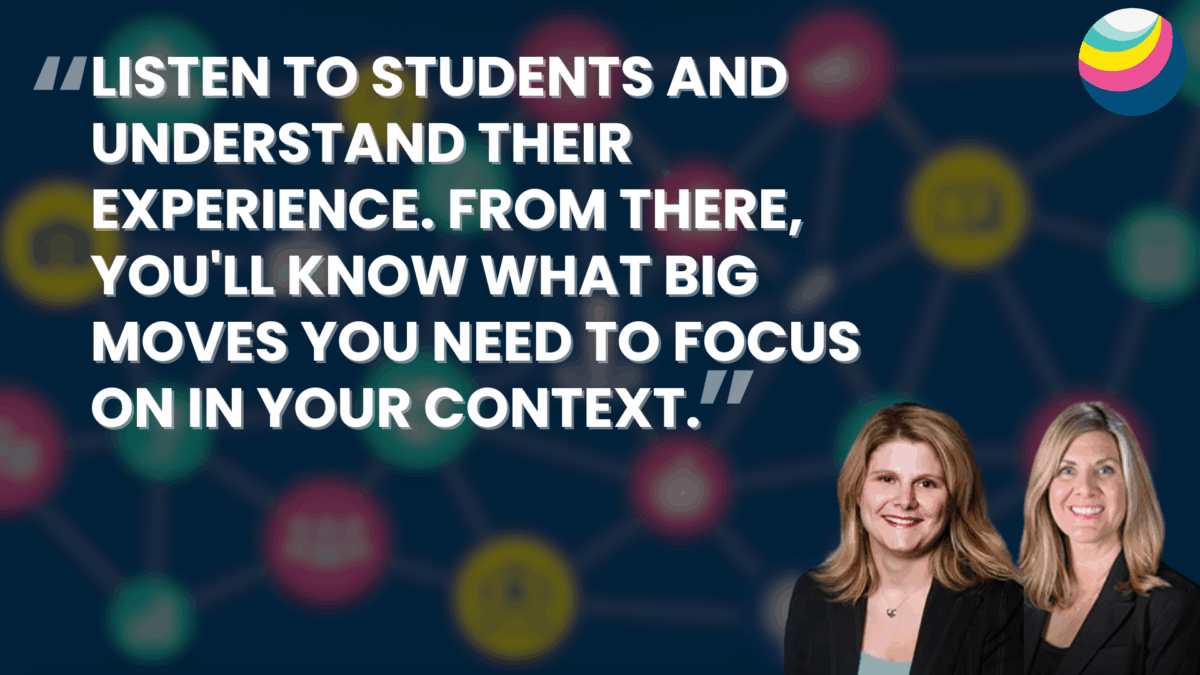The What, Why, and How of Learning Walks
Learning Walks are a signature learner-centered practice — one of our favorites at Learner-Centered Collaborative. They provide an opportunity to view learning in a classroom without an evaluation or judgment mindset. Visiting classrooms to see learning in action is not only a best practice, but also critical to a learner-centered approach. Observing learning puts learners at the center, which enables schools to celebrate meaningful learning experiences and create the enabling conditions to support them.
What is a Learning Walk?
As the name implies, Learning Walks are an opportunity for learning. Using a school or district’s Learning Model as an anchor, Learning Walks bring us beyond our own classrooms and schools to observe learner-centered practices and bright spots in classroom environments, celebrate strengths, and identify trends to inform future support—all in a non-evaluative way.
They typically include:
- An orientation to align on process and purpose
- Classroom visits in small groups, and
- A whole-group debrief to share out celebrations and trends
Working on your Learning Model? Download this tool that guides teams through identifying their learner-centered priorities.
Why conduct Learning Walks?
Learning Walks offer an authentic glimpse into teaching and learning practices in a school or district. A few minutes of observation rarely tells the full story of learning in a classroom, but the snapshot is often just enough to begin celebrating bright spots and identifying trends as Learning Walks, quite literally, open the door for us to:
- spot best practices to celebrate with educators,
- create shared understanding of learner-centered strategies in practice,
- connect with learners to better understand their school experience,
- discover opportunities for future professional learning, and
- uncover conditions that are enabling or blocking a learner-centered approach
Get a glimpse into how some of our partner schools have leveraged Learning Walks and the outcomes they’ve achieved:
How to get started with Learning Walks?
At Learner-Centered Collaborative, we facilitate Learning Walks with schools to bring an outside perspective and empower team members to focus on what matters most to them– observing, learning, and collaborating in their learning community. When our team leads Learning Walks with partners, we have the added goal of building internal capacity in teams, so they can conduct Learning Walks independently in the future.
First, we define what you’re hoping to gain from the Learning Walk. We recommend clarifying the elements of your Learning Model that you’d like to see on your Learning Walk.
Check out this tool to help clarify your learner-centered priorities.
Then, we consider which stakeholders you’d like to involve. Learning Walks can start small—at the school level—or span across an entire state or region. Within a school they often occur with teachers and leaders. Cross-district Learning Walks typically take place at a few schools and state-level walks can span multiple days and districts.
Download our Learning Walks “Look Fors” tool to guide your observation, learning, and reflection process.
Finally, we plan your Learning Walk experience. At Learner-Centered Collaborative, we’ve learned that a flexible agenda with a structured opening and closing is most effective. Here’s a sample:
1. Orientation: Align on process and purpose
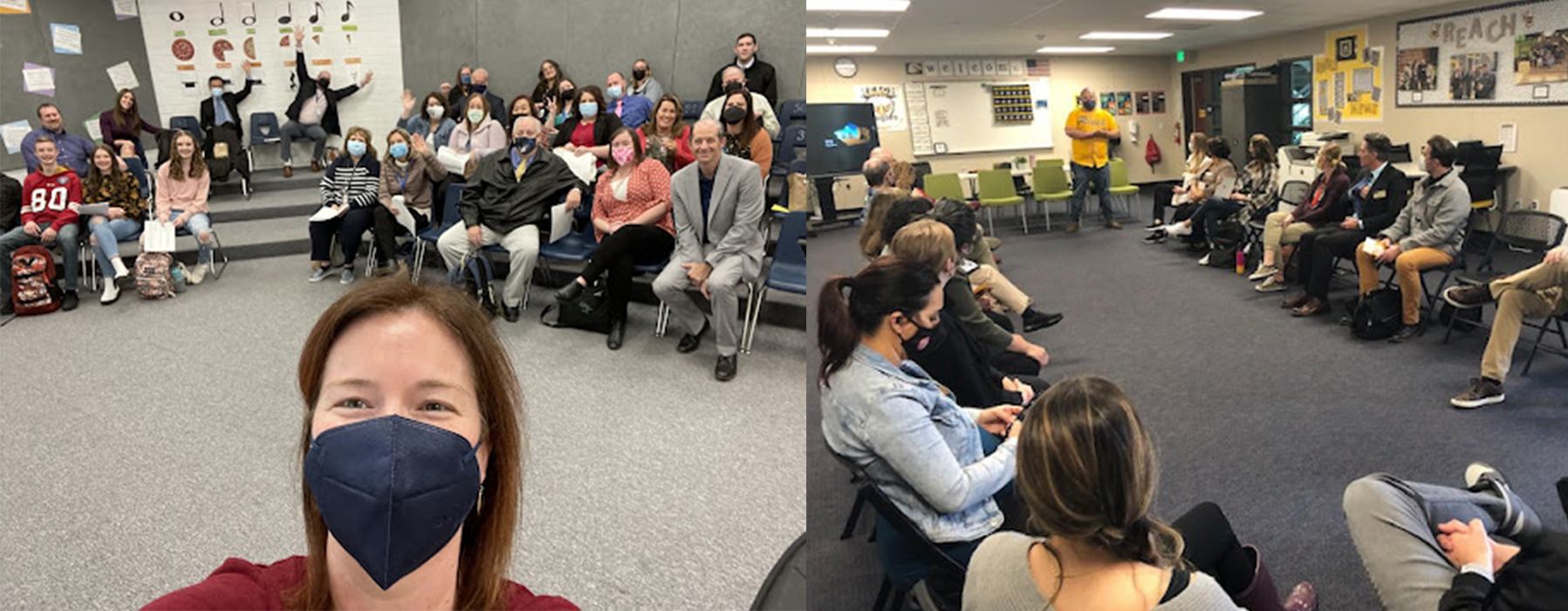
2. Small-group classroom visits: 5-10 minutes per classroom + 5 minute hallway debriefs to align on what was observed
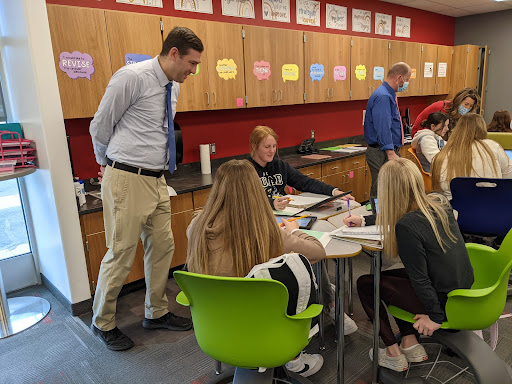

3. Whole-group debrief: Share out celebrations and trends

As you map out a plan for Learning Walks, remember to resist the assessment and evaluation mindset that so many bring to classroom visits. Remind yourself that the purpose is learning and celebrating. How might you take what you observe on a Learning Walk to spark productive conversations with educators, students, and/or leaders?
Interested in learning more about facilitating Learning Walks in your school or district? Reach out to us at collaborate@learnercentered.org
